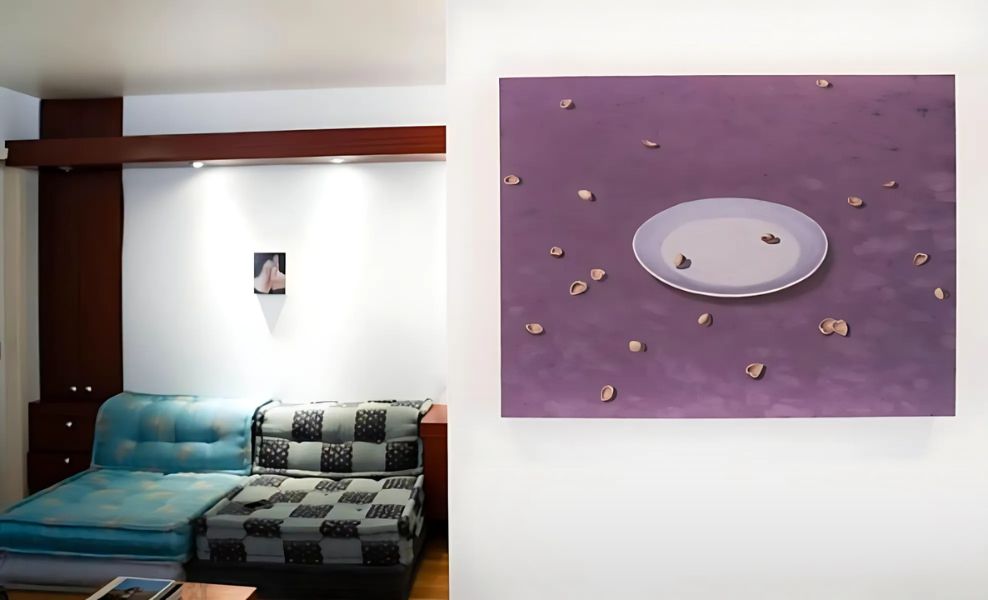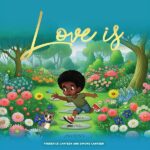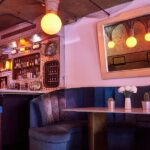By: Xiaojing Zhu
Located in a former apartment unit in Downtown Los Angeles, Xiangjie Rebecca Wu’s solo exhibition “Joy of Yesterday”, the second show of MAKE ROOM’s “In Situ” project, navigates nostalgia with razor-sharp clarity, activating a curated site-specific lens to reveal a skeletal reading of her rural upbringing memories. Framed by the space’s floor-to-ceiling windows, the distant urban skyline becomes an unexpected yet integral exhibition element, underscoring the works’ silent scrutiny—those seemingly mundane images imbued with a solemn, sober, and contemplative stillness.
Grounded in her early undergraduate studies in philosophy, Rebecca approaches memories with an analytical perspective in her childhood experience, communal memories, and vernacular traditions rooted in a village along the Yangtze River in southern China. Rather than simply depicting the lost objects or ephemeral moments, her paintings murmur something more uneasy, alienated, and flinching: a fractured quiet that lingers in the traces of a restrained way of life, woven into inherited domestic structures. Beyond a fondness or longing, she portrayed the imperceptible debris of the intimacy laced with anxiety.
This undercurrent emerges in the first painting encountered at the entrance. A single, suspended, dim yellow bulb, placed at the farthest point from the natural light with an illusion to “lighting up” the darker corner of the space, pitched the tone of the exhibition: a solemn reminiscence. It cannot light up but itself, casting a sense of introspection, as if engaging in an ontological inquiry. This bare bulb, stripped of any decorative lampshade, is a familiar and telling presence in rural China—a pragmatic fixture born of necessity rather than aesthetics. Yet in its stark simplicity, it speaks to a kind of cultural stasis and isolation, suspended between function and emotional weight.
In alignment with this site-responsive curatorial approach, the gallery’s kitchen area features a brown-toned painting depicting a close-up of two hands delicately pinching a wonton. Unquestionably emblematic of the domestic labor embedded in the making of homemade food—and visually resonating with the painting of a vivid purple mesh dish cover displayed on the opposite wall, a once-ubiquitous object in Chinese households—an uncanny undertone emerges through the depiction of hard-angled, exerted hands and garishly bright rural artifacts. These elements suggest a transformation of mundane domestic routines into distilled, almost ritualistic acts of everyday life.

A quiet visual synchronicity occurs in the adjacent alcove: two side-by-side couches—one solid blue, the other in a black-and-white pattern—uncannily echo the composition of a nearby painting depicting a loosely folded blue shirt resting on a handmade wooden bench. The shirt, precariously placed and seemingly on the verge of slipping, evokes a sense of fragile stillness that resists logical interpretation, imbued with the symbolic charge of a latent prophecy.
This subtle moment of spatial resonance unveils another dimension of Wu’s practice: her attunement to unspoken, yet inherited prophecies, silently transmitted through domestic gestures, generational memory, and spatial familiarity.
Just as every prophecy is inseparable from its contextual grounding, each obscured presence bears the weight of a story: the two faceless figures connected by the delicate arc of yarn exemplify a restrained yet emotionally charged expression of intergenerational care, conveyed through minimal but deliberate gesture; a pair of bare feet, visible only through the narrow gap beneath a closed door on pale blue-gray tiles—presumably in a public bathing facility—conjures the sensation of icy, wet tiles underfoot, evoking vulnerability and exposure; two child-height silhouettes stand behind a pale lavender theatrical curtain, their raised palms casting fading shadows against the fabric. These dissolving gestures introduce a spectral tone, alluding to an impending sense of loss and the unresolved emotional residue of childhood innocence.

Just as the painting of a suspended purple balloon floats against a muted grey blue, its placement near the window creates a subtle visual tension. The balloon’s upper shadow suggests an unseen obstruction, contrasting sharply with the openness of the sky outside. This juxtaposition intensifies the painting’s emotional ambiguity: the balloon appears buoyant yet burdened, tethered yet resisting gravity. An alluring, tempting horror simmers beneath the surface of these seemingly tranquil depictions, each impinging gesture precisely tracing the shadowy textures of early memory.
What unfolds is an anatomical and critical excavation of loss, bitterness, and the unjust innocence embedded within these seemingly tranquil fragments—here is where nostalgia becomes perilous and unknowable, like the folkloric specter of water spirits said to haunt children’s dreams. Each quietly yet seductive and unsettling scene is laid bare beneath the scalpel of reason, revealing the complex trauma interwoven with a déjà vu-like sense of instinctive unease, pulsing through our veins as a generational inheritance. Far from offering a sentimental tale of childhood rural life, Wu’s work provides a skeletal reading of intimacy, one that transcends melancholic longing and nostalgia, opting instead for a more introspective and analytical engagement with the past.
In these solemn reflections on her volatile, iridescent dreams, one senses the fragility embedded within an unspoken prophecy transmitted through generations of mundane, domestic practices. It is precisely within these lingering, elusive, and seemingly ordinary moments that the a priori has been bred.
Xiangjie Rebecca Wu: Joy of Yesterday
https://www.makeroom.la/in-situ/rebecca-wu/
3 May – 7 June, 2025
MAKEROOM, In Situ

















